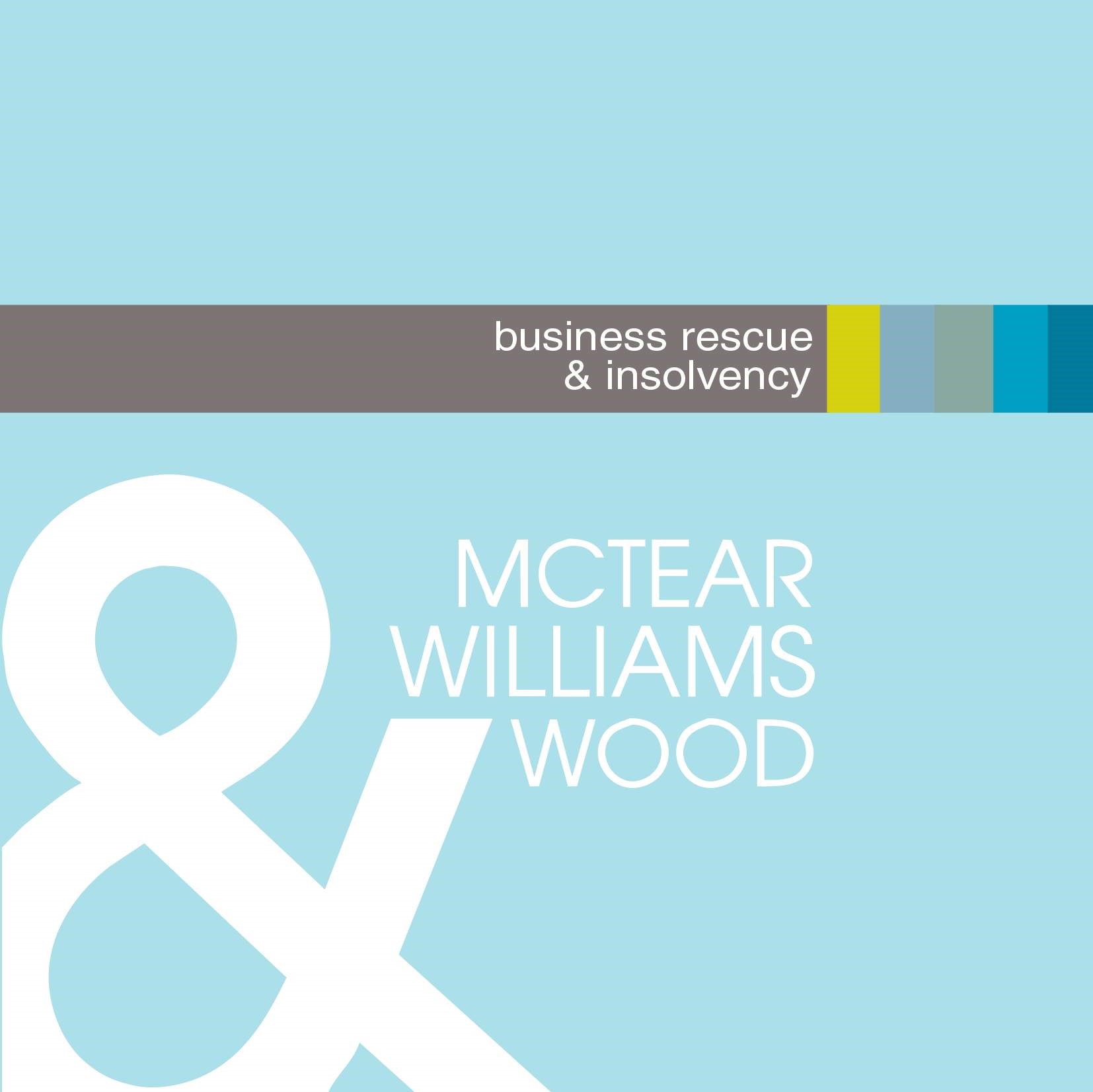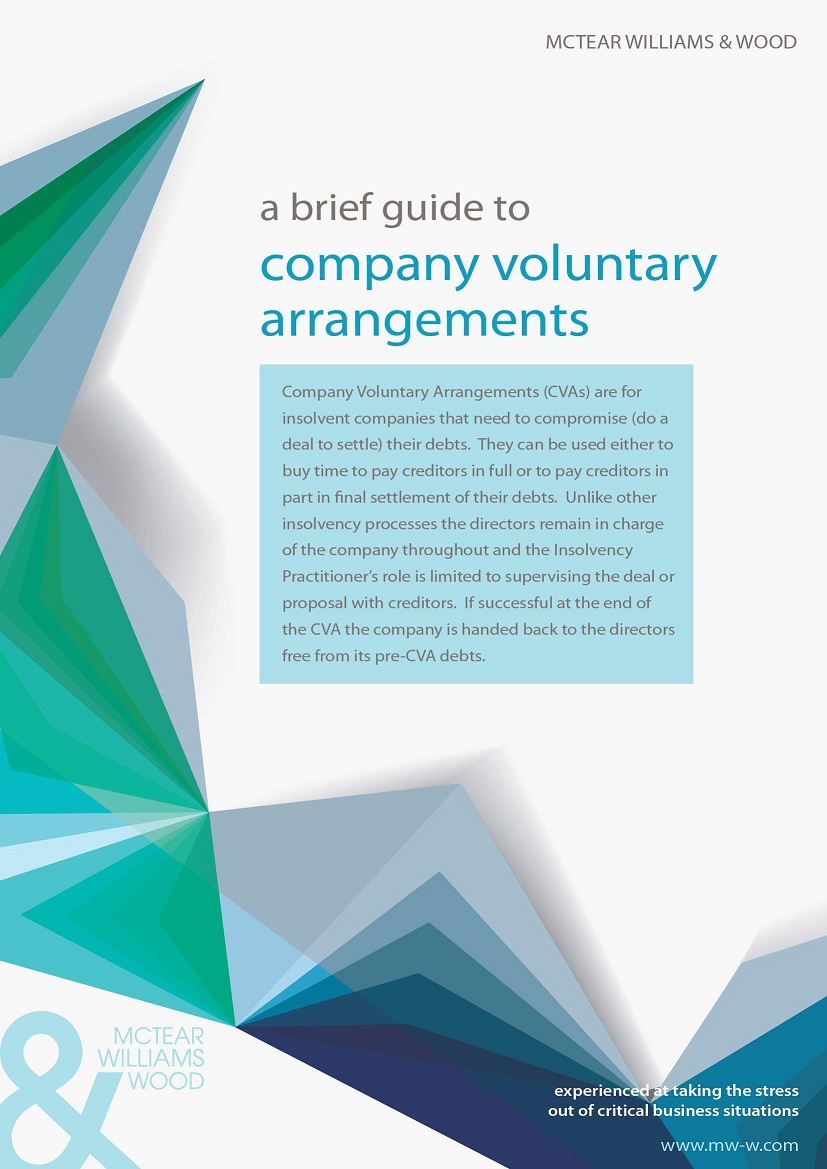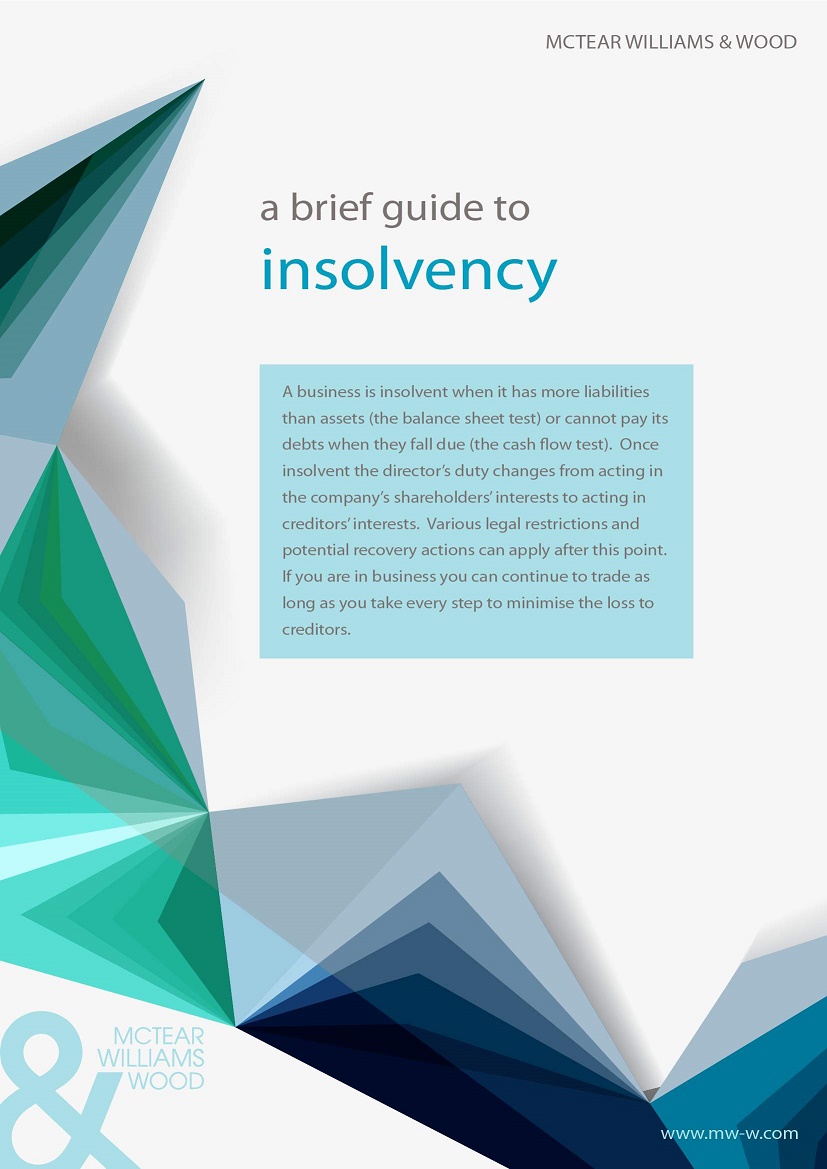FAQs for directors
Company Voluntary Arrangements ("CVA")
- When should I put my company into CVA?
When it is insolvent but the business is viable (once restructured) and you are able to pay creditors more than they would get in a liquidation. - What is a CVA?
It is a statutory contract between a company and its creditors. Like any contract it can be highly flexible to suit the circumstances. For it to bind all creditors it must be approved by 75% in value of creditors that bother to vote. - Do I have to pay creditors 100 pence in the pound?
It is all a matter of affordability usually from a controlled realisation of assets or by making voluntary contributions from future trading profits. If your company is suffering a short term cashflow crisis and it has plenty of assets then the chances are it will have to offer creditors 100 pence in the pound over time. If it has little in the way of assets and can only generate modest profits then the dividend could be below 20 pence in the pound. Your licensed Insolvency Practitioner will guide you. - What is the main advantage of a CVA?
The directors remain in control. The licensed Insolvency Practitioner's role is limited to fixing the deal with creditors and making sure the company fulfils its part of the bargain. A CVA is usually much less costly than administration or liquidation. - What is the main disadvantage?
If your company is not able to pay 100 pence in the pound then creditors are likely to demand the lion's share of the profits over a full five year period. Effectively you will be working mainly for creditors during that time. Five years a long time in which things can go wrong. Make sure it is limited to that as some Insolvency Practitioners get over zealous. - I have heard that most CVAs fail. Is that true?
Unfortunately yes it is but only because directors are not sufficiently realistic and creditors simply demand too much. Also things can change over a five year period and not always for the better. - How long does it take to put a CVA in place?
It can take as little as three weeks but usually more like a month. Creditors have to be given 14 days notices of a decision procedure and it takes at least a week to agree on the proposal to be put to creditors and draft the documents. - What will my bank and HMRC think?
A CVA is an insolvency process so no one is going to be doing cartwheels about it but in the main banks and HMRC are supportive. A CVA cannot affect a secured creditors' rights so a bank with a debenture usually stands to one side and lets creditors decide as the bank would expect to get paid as normal. HMRC has a specialists unit called the Voluntary Arrangement Service that is very experienced at assessing CVAs. In fact you could think of a CVA as the ultimate time to pay agreement. - Is a CVA suitable for all types of business?
No. Contracting businesses (that tender for work) often struggle as credit checks are often carried out by customers before awarding work. On the other hand CVAs work brilliantly for retailers as consumers simply want to buy what's on the shelf/rack and don't stop to think about the financial health of the vendor. - How does a CVA end?
By the company fulfilling all its obligations in the proposal and the supervisor issuing a certificate of completion. At that point any remaining unpaid creditors are written off and the company carried on. If during the CVA the company cannot meet all its obligations then the proposal may need to be varied (with 75% of creditors by value agreement) or failed by the supervisor issuing a certificate of completion.
Speak to one of experts for information around this subject on 0800 331 7417



